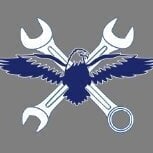Most (if not all) technical issues and crashes experienced on stable releases of MTA are somehow related to the user's PC, such as underlying OS or driver issues, bad mainentance state of the OS, viruses interfering with MTA, etcetera. In this subforum (client support) we have a range of users who are willing to offer you support, of which some have an advanced technical IT background and thus are able to dive deep into said problems, given that they have sufficient information to help you troubleshoot the underlying causal problem.
MTADiag makes their job easier, by collecting a set of information that helps them get started in advising you what to do next.
Client support information: (open spoiler) - also read this if you're not getting a response to your problem in a timely manner
MTADiag is a small open-source console application which will:
Read MTA's and GTA's install paths, and MTA's current version - if multiple versions of MTA are installed, it will ask the user to pick one to diagnose
Automatically remove compatibility mode settings for GTA and MTA (except for Administrator privileges)
Automatically download and launch MTA's latest patch installer
Automatically generate a dxdiag log
Automatically install necessary certificates for MTA
Create a log file with the aforementioned paths, MTA's previous and updated version strings, the generated dxdiag log, a list of currently running processes, the contents of CEGUI.log, core.log, and logfile.txt, directory listings of the MTA, GTA, and GTA\models folders, and some other miscellaneous information which is automatically uploaded to MTA's Pastebin.
Current version: 2.9.0 (January 2024)
It's a little unfriendly due to the fact that it's a console app, but it will streamline client support topics by aggregating all potentially useful information for our QA and staff to help troubleshoot your issues into the first post, or potentially eliminating the need to create a new topic altogether if removing compatibility mode entries, automatically applied repairs & installing the latest nightly and the DirectX runtimes fixes the user's issue. I've added a download link to MTADiag in the MTA CRASHING? Read here first! sticky thread.
Download MTADiag
MTADiag is opensource, check out the repository at https://github.com/multitheftauto/mtadiag
Instructions to use the tool and request support accordingly:
Please download and run MTADiag and follow the instructions.
Post any Pastebin URL MTADiag gives you in a new topic you'll create at https://forum.multitheftauto.com/forum/83-client/, after which support can be offered.
MTADiag supports Windows XP and newer, but must be run with Administrator privileges on Windows Vista and newer.
If MTADiag will not run for you, install Visual C++ 2017 runtimes and try again.



.thumb.png.29edd9cc38351c52f17256b491c769a1.png)
